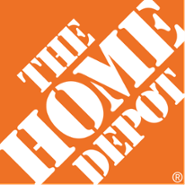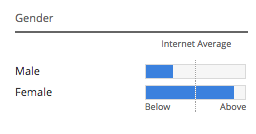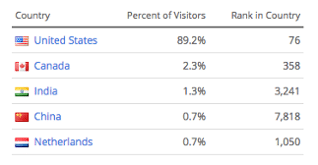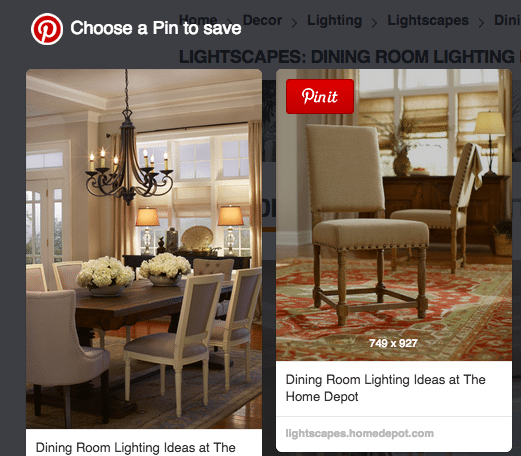Case Study: Home Depot

In the past few weeks we’ve been discussing the eCommerce conversion funnel from awareness to advocacy. In our first post, we discussed how quality, relevant content that is related to your products but isn’t direct advertising could increase customer awareness of your brand and your products.
This idea of attracting potential customers to your site through quality content will definitely be a trend in 2015. It works for all sites, regardless of your industry or sector. Both B2B and B2C brands and companies are widely adopting new ways to reach their existing and prospective customers.
It’s no wonder, as this content seems to be generating results for everyone. I have picked out what I think to be a good example of a company doing a spectacular job at content marketing that I would like to present you with today:
Home Depot
Home Depot is the largest home improvement and construction retailer in America. Think lumber, tools, and paint. Not the easiest business to create content marketing for. But, they do, and they do it well.
Home Depot’s main target group is women in the United States, as noted by their traffic demographics provided by Alexa.com.


Home Depot focuses on three main channels for their content marketing: blog, youtube, and pinterest. All three of them show exciting D-I-Y projects that incorporate their products and facilitate their purchase, without being overly sales-y.

Home Depot’s top shared page received over 66,000 shares on social networks. The most surprising thing about this statistic is that this was a product page. This level of sharing with product pages is nearly unheard of. So, how’d they do it? They turned, what could have been a normal, boring list of light fixtures into an interactive page, allowing you to see how certain fixtures would look in different light settings and giving tips such as how to optimize the light angles and sources. This makes for a great page, but what drove its popularity is the ease with which users could share these images on Pinterest. With the one click of the Pinterest button on the main page, users are given an expansive gallery of lighting fixtures that they can pin to their personal pages with just one click. The key to the success of this page was its interactive nature and ease of sharing.
Home Depot is prolific on youtube with hundreds of D-I-Y videos and over 80,000 subscribers. These videos give step-by-step instructions for projects and allow users to comment when they need further instruction. There are two main attractions here: 1) informational content that is highly attractive and useful to Home Depot’s customers and 2) the ability to interact with the content in a way that makes HD’s users feel connected to the brand.
Finally, Home Depot’s blog takes the interactive D-I-Y aspect one step further as they have implemented a guest blogging strategy whereby bloggers and customers share their own D-I-Y projects using Home Depot’s products. These blog posts averaged over 500 social interactions each and were heavily shared on Pinterest, which is an incredible platform for visual content. Each post on Home Depot’s blog averages an astonishing 14 images, giving users an incredible amount of detail in each post.
Home Depot has successfully taken advantage of what they know how to do best and provided that knowledge, for free, with high quality content to their users and ultimately their customers.
How Can I Get the Most out of My Content?
Did you notice something about Home Depot’s content marketing strategy? Not only do they provide interesting, informative, and interactive content, but they do so on several platforms. They essentially have one main piece of content, the D-I-Y instructions + visual, and they reformat it and push it into different channels to increase their exposure.
You too can do this for your own content marketing distribution. For example, if you already have an interesting blog post written, you can mold it into these four different formats to increase your exposure.
Step 1: Turn your blog post into a .PDF and submit it to sites like Scribd, Issuu, 4shared, and Calameo. All of which are looking for interesting content to bring in more users.
Step 2: Reformat this PDF into a slide show and submit it to sites like SlideShare, SlideRocket, Slideboom, and PowerShow.
Step 3: Would it work with a voice over? If so, turn the presentation into an animated video and upload it to youtube.
Step 4: From there, you can save the audio and submit it as a podcast to iTunes, SoundCloud, Stitcher, etc.
As you can see, just like Home Depot, you too can repurpose your content to reach a wider audience. But, it doesn’t necessarily mean that you will. It just means that you’re able to. Like W. Allen would say: “80% of success is showing up”. It’s all about being there when someone has a need that you can satisfy.
Before you embark on a content distribution system, make sure that it’s something that people will want to share. Is it interesting? Informative? And interactive?
Content is full of advantages but I’d like to highlight, for context-sake, two of them:
- It’s pull marketing: it’s all about getting customers coming to you when they’re in need instead of pushing them an ad or similar when they’re talking with friends or looking for dinner recipes
- It’s organic: the problem with paid advertising is that once you turn off the dollar stream, your paid traffic stalls. This is both dangerous and unsustainable for your business. Content, on the other hand, is like a good wine. It matures. It stays there, being consumed, talked about, appreciated and winning authority.
Summing up, this post is all about using content marketing to get the right message in front of your customers in their right context and formats. Educational and demand based content can work wonders for your conversion rates and thus increase your sales. Be sure to create interesting, informative, and interactive content and then modify and repurpose it so that you can share it on several different platforms to be able to get your message heard!
How are you using content marketing to boost your e-commerce sales?
Have you tried to repurpose content and distribute it elsewhere?
If so, how’d it go and what networks did you use?
Comment below!
Interested in knowing more about Dark Social & Analytics?
[su_button url="https://getsocial.io" target="_blank" style="flat" background="#21D2B5" color="#ffffff" size="7" wide="no" center="yes" radius="auto" icon="" icon_color="#FFFFFF" text_shadow="none" desc="" onclick="" rel="" title="" id="" class=""]SIGN UP FOR FREE[/su_button]





